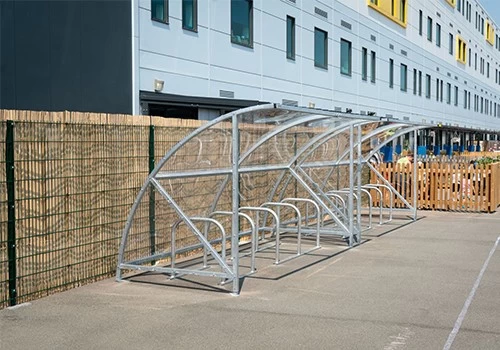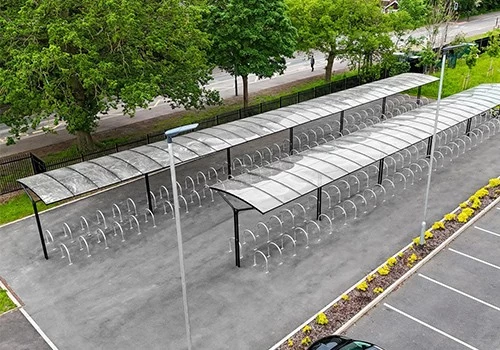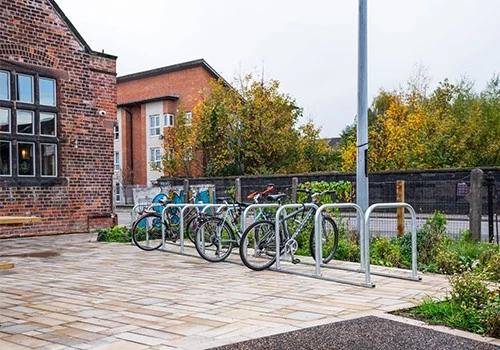Specifications
Model Number : PV-SC-001
Type: Bike parking and storage
Color:Yellow,Black,Green,Red,or Customized.
Style : both indoors and outside
Material : carbon steel
Loading: According to customer need
Size :195*23.2*75cm,200.55*23.2*75cm,or Customized.
Finish: hot-galvanized
Specifications
Model Number : PV-0081-01
Type: Bike parking and storage
Color:silver
Style : both indoors and outside
Material : carbon steel
Loading: According to customer need
Size :Height 1463mm, Depth 1114mm
Finish: hot-galvanized
Model Number : PV-0081-01
Type: Bike parking and storage
Color:Black
Style : both indoors and outside
Material : carbon steel
Loading: 2-10 bikes (According to customer need)
Size :Height 1463mm, Depth 1114mm
Finish: hot-galvanized
Model No.: PV-H1
Size: w605*D400*H330mm
Specification: Round tube:¢16*1.2mm
Finish: Power coated
Net Weight: 1.6 kgs
Packing size:6pcs/ctn
MOQ: 100pcs
Model Number : PV-0024-01
Material : carbon steel/stainless steel
Loading: according customer space size,we can design according the size
Size : W1977*D1130(depend on your parking space)*H2500mm
Finish: Powder coated ,hot-galvanized/electric polish
Packing size :2000*2000*2500mm(40 parking space )
Powder coated ,hot-galvanized/electric polish
Product number:PV-0046-01
Material:carbon steel
Specification:10.2*59*28CM or Customized.
MOQ:100PCS
Port:Shanghai
Trademark:PV
Model Number : PV-0081-01
Type: Outdoor Bike Parking Rack
Style : both indoors and outside
Material : carbon steel
Loading: 2-10 bikes (According to customer need)
Size :170.5*116*148CM
Finish: hot-galvanized
Model Number : PV-0055-01
Type: compact flat pack /slot
Color:black / silver /yellow/optional
Style :Outdoor/indoor
Material : carbon steel/ stainless steel
Capacity : park 6 bikes
Size : L1400*W1054*H840mm
Net weight :38KG
Finish: powder coating / hot galvanized /elctropolishing
Packing size :1490*860*160mm 1pcs/ctn
Product Name: Multi-Capacity Horizontal Two Tier Bike Parking Rack
Material: Carbon Steel
Finish: Powder coated
Post: 80mm * 80mm thickness: 3mm
Steel plate: thickness: 2mm
Dimension: 1325*1890*1830mm
Weight: 370 kg/set
Model: PV-0067-01
Material: stainless steel 304
Pipe: 50 mm* 2.5 mm
Size: 900*700 mm(L*W)
Surface treatment: polishing

As cycling continues to grow in popularity worldwide, cities and businesses are responding by increasing the availability of bike parking racks. Yet, with the rise in bike usage comes an unfortunate increase in bike theft, a major issue that can deter cyclists from commuting or traveling by bike. For businesses, parks, municipalities, or even residential areas looking to offer bike parking, the need to integrate strong anti-theft features into bike racks has never been greater.
Designing and producing bike parking racks that prioritize security not only protects the cyclist’s property but also enhances trust between users and service providers. Understanding the critical elements of anti-theft design can help manufacturers create products that stand out for their reliability and safety. This article will explore why anti-theft features are essential, the key components of secure bike racks, and how manufacturers can lead the market by focusing on security in their designs.
Bike theft is a significant concern for cyclists around the world. According to data from several cycling organizations, millions of bicycles are stolen every year, and many of these thefts occur in public spaces where bikes are parked without proper security. The increase in bike theft affects not only individual cyclists but also cities, communities, and businesses that rely on cycling as a form of sustainable transportation.
For cyclists, losing a bike can be a personal and financial disaster. Many individuals invest in high-quality bicycles that cost hundreds or even thousands of dollars. When a bike is stolen, it can result in a loss of mobility, disrupting daily commutes or recreational activities. In response, some cyclists might reduce their bike usage, diminishing the environmental and economic benefits of cycling.For manufacturers of bike parking racks, the challenge is clear: how to provide solutions that help prevent theft and offer peace of mind to bike owners.
The most important factor in determining the security of a bike parking rack is its ability to effectively secure the bicycle to the rack, limiting access to potential thieves. The following key components are essential to a well-designed anti-theft bike rack:
High-Quality Materials: Using durable, tamper-resistant materials like heavy-duty steel, stainless steel, or other robust metals ensures that the rack can’t easily be cut or broken. Low-grade materials may look appealing but are often easily damaged by common tools such as bolt cutters.
Anchoring and Installation: Proper installation of the rack is crucial. A bike rack that can be easily removed or tampered with at its base presents a major vulnerability. Anti-theft racks should be anchored securely into concrete or other solid foundations, making it impossible for thieves to lift or dislodge the rack.
Multiple Locking Points: The best bike racks offer multiple locking points for cyclists to secure their bikes. This means that both the frame and the wheels can be locked to the rack, making it harder for thieves to steal the bike in parts or as a whole.
Integrated Locks: Some advanced bike parking racks come equipped with integrated locks. These built-in systems can provide an additional layer of security and convenience, eliminating the need for cyclists to bring their own locks.
Design that Limits Leverage Points: Bike racks that limit the space and leverage points available for thieves to insert tools like crowbars can help deter theft. Rounded edges, smaller gaps, and tight fittings are all aspects of secure rack designs.
As technology advances, so do the opportunities to integrate anti-theft measures into bike parking racks. Manufacturers have the chance to take security to a new level by incorporating smart technologies. GPS tracking devices, for example, can be integrated into bike parking systems to monitor bike movements. In the event of theft, these systems can alert authorities or the bike’s owner, significantly improving the chances of recovery.
Smart bike racks can also use mobile apps or electronic locking systems that offer keyless access to registered users. By using their smartphones to lock and unlock their bikes, cyclists can eliminate the risk of losing a physical key or using less secure combination locks.Moreover, anti-theft bike racks can be equipped with sensors that detect tampering. These sensors can trigger alarms or notify nearby security personnel, providing real-time protection in public areas where the risk of theft is highest. As smart cities evolve, the integration of these intelligent systems into bike parking infrastructure is likely to become more widespread.

Aesthetics and functionality must work hand-in-hand when it comes to bike rack design. While the primary focus should be on security, manufacturers should also consider how their racks fit into the surrounding environment. A bike rack that looks inviting and user-friendly will encourage more cyclists to use it, while still offering robust anti-theft features.Modern designs such as the U-shape or ring-type bike racks are not only visually appealing but also highly functional in terms of security. These designs provide solid locking points and are often made from thick, durable materials that resist tampering.
Custom bike parking racks that cater to specific locations, such as high-traffic urban areas or secluded residential complexes, allow manufacturers to provide tailored solutions. By working with local governments or private property owners, manufacturers can assess the risks associated with each location and design accordingly.
While bike parking manufacturers play a key role in providing secure infrastructure, educating cyclists about proper locking techniques is equally important. Even the most advanced anti-theft rack is only as good as the way it is used.Bike parking rack manufacturers can enhance their brand image by providing educational materials to their clients and end users. Instructions on how to lock both the frame and wheels securely, using high-quality locks, and avoiding easily accessible racks in poorly lit areas can make a huge difference in preventing theft.
Partnering with local governments or cycling organizations to promote bike theft awareness can also help manufacturers establish themselves as leaders in the industry. This dual approach—offering both secure infrastructure and user education—positions manufacturers as comprehensive solutions providers rather than just product suppliers.
Investing in anti-theft bike parking solutions yields numerous long-term benefits for both the provider and the user. For businesses and municipalities, offering secure bike parking promotes cycling, reduces traffic congestion, and enhances the image of the area as bike-friendly.For property developers, installing anti-theft bike racks can increase the value of residential and commercial properties. Potential tenants or buyers are often attracted to properties that offer secure bike parking, especially in areas with high levels of cycling activity.
Cyclists, on the other hand, are more likely to use bikes as their primary mode of transportation when they feel their property is safe. This increase in bike usage has significant health, environmental, and economic benefits for the broader community.

As the world moves toward greener, more sustainable modes of transportation, the demand for secure bike parking will continue to grow. Manufacturers of bike parking racks have a unique opportunity to shape the future of cycling infrastructure by prioritizing security in their designs.Anti-theft features, from high-quality materials and solid installation to smart technologies and user education, are the foundation of this effort. By focusing on these critical elements, manufacturers can create bike racks that not only meet the practical needs of cyclists but also instill confidence in their safety.
In this way, bike rack manufacturers contribute to a cycling-friendly culture where more people feel empowered to leave their cars behind and embrace cycling as a safe, convenient, and eco-friendly form of transportation.